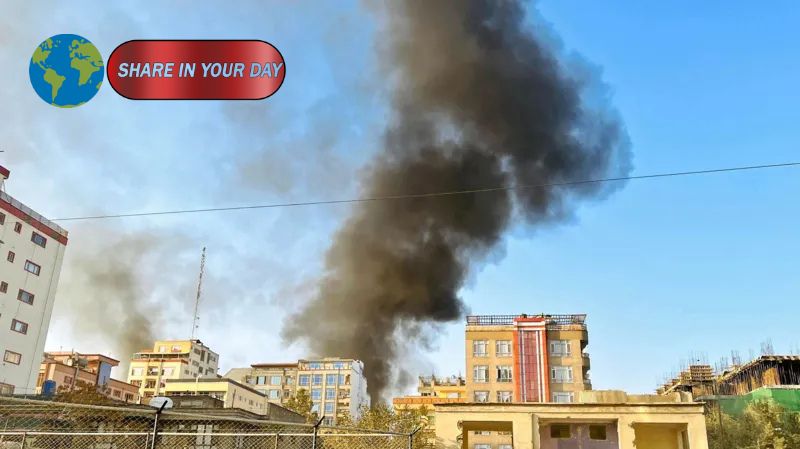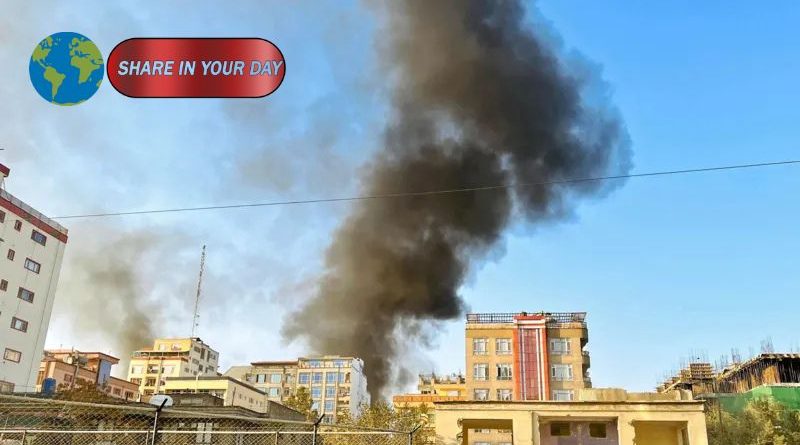Afghanistan and Pakistan Agree to Temporary Ceasefire After Deadly Cross-Border Clashes
ISLAMABAD/KABUL — Pakistan and Afghanistan’s Taliban-led government have agreed to a 48-hour temporary ceasefire, halting a sharp escalation of border violence that has left scores dead and wounded on both sides, with civilians caught in the crossfire.

The truce — which began at 13:00 GMT on Wednesday — follows several days of intense clashes near the Spin Boldak-Chaman border crossing, and suspected Pakistani airstrikes in Kandahar and Kabul, though both governments have offered conflicting narratives and unverified casualty figures.
While both Islamabad and Kabul claim the other side requested the ceasefire, it marks a rare moment of de-escalation in what has become a volatile flashpoint between the two neighbors.
“During this period, both sides will make sincere efforts to find a positive solution to this complex but solvable issue through constructive dialogue,” Pakistan’s Foreign Ministry said in a statement.
A spokesperson for the Afghan Taliban confirmed the ceasefire and said their forces had been instructed to hold fire “as long as no aggression is committed.”
📍 Fighting Erupts Amid Accusations and Airstrikes
Wednesday’s agreement came after a series of explosions in Kabul and Kandahar, hours after Pakistani forces reported killing “15 to 20” Taliban fighters in the border district of Spin Boldak.
In return, the Taliban claimed several Pakistani soldiers were killed in the clashes. A doctor in Spin Boldak told the BBC that seven bodies and 36 wounded — including civilians — had been brought to his hospital, with numbers expected to rise.
Taliban officials alleged Pakistani jets struck Taliban positions in Kandahar and near Kabul, triggering black plumes of smoke and prompting emergency evacuations. Kabul’s Emergency Surgical Center confirmed receiving 40 casualties, with five pronounced dead on arrival.
There has been no official confirmation from Pakistan’s military about conducting airstrikes, but state media reports alluded to operations in Afghan territory.
“I see drones and jets flying over us, some of our relatives are wounded,” said a resident near the border.
💣 Dozens Feared Dead as Border Violence Spills Over
The violence followed a weekend of border fighting, during which the Taliban claimed to have killed 58 Pakistani soldiers, while Islamabad said it eliminated 200 Taliban and affiliated militants. These death tolls remain unverified.
In Spin Boldak, where the clashes are most intense, hundreds of families have reportedly been displaced. Taliban sources claimed some of their posts were destroyed by aerial bombardment, and that they recovered the bodies of two Pakistani military personnel.
A separate overnight operation on Pakistan’s north-western border reportedly killed 25 to 30 fighters believed to be members of the Taliban or the Pakistan Taliban (TTP), according to the Pakistani army.
⚠️ Rising Civilian Toll and Calls for Calm
The United Nations has expressed deep concern over civilian casualties and displacement.
“I urge all parties to exercise maximum restraint, protect civilians, and abide by international law,” wrote Richard Bennett, the UN Special Rapporteur on human rights in Afghanistan.
International players, including China, Russia, and the United States, have called for immediate de-escalation. Former U.S. President Donald Trump even offered to help mediate peace between the two governments, a suggestion that has not yet received formal response.
🎯 Root of the Conflict: Militancy and Mistrust
At the heart of the conflict is Pakistan’s long-standing accusation that the Afghan Taliban are harboring the Pakistan Taliban (TTP) — a militant group fighting to establish a stricter Islamic regime in Pakistan.
Kabul’s Taliban government has repeatedly denied these claims, asserting that it does not allow its territory to be used for attacks against other nations. Yet Pakistan continues to face cross-border attacks, which it blames on safe havens in Afghan provinces near the border.
🌐 Social Media Warfare Escalates
While guns thundered at the border, both sides also took their battle to social media. Each claimed the upper hand with unverified videos circulating on X, WhatsApp groups, and Telegram — allegedly showing destroyed military posts, drone footage, and images of casualties.
Taliban fighters in grainy night-vision clips purportedly document hits on Pakistani positions. Pakistani sources, meanwhile, broadcast drone footage of retaliatory strikes, though none of these materials have been independently authenticated.
🚨 Outlook: A Fragile Truce
Though the ceasefire is only temporary, it offers a small window of hope for diplomatic engagement between two nations with deep mistrust and open wounds.
For civilians in border districts like Spin Boldak, even a short pause in violence is welcome.
“We don’t care who started it,” said one local resident. “We just want the bombs and bullets to stop.”




